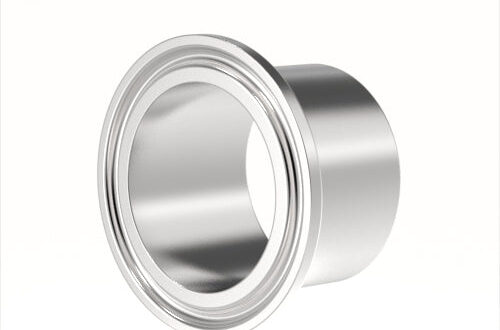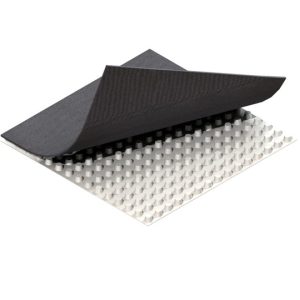-
What Tool Measures Wind Speed? A Comprehensive Guide
What Tool Measures Wind Speed? Wind speed measurement is crucial across numerous fields, from meteorology to renewable energy. The primary device used is an anemometer, a specialized tool designed to accurately gauge wind velocity and direction. Types of Anemometers There are several types of anemometers, each suited for different applications. Cup anemometers are common for weather stations, while vane anemometers measure both speed and direction. Hot-wire and ultrasonic versions offer high precision for scientific research. Key Features and Applications Modern anemometers often include digital displays, data logging, and connectivity options. They are essential in aviation, marine navigation, construction safety, and environmental monitoring. For reliable measurements, consider factors like range, accuracy,…
-
How to Measure Wind Speed: Top Instruments and Techniques
How to Measure Wind Speed: Top Instruments and Techniques Whether you’re a weather enthusiast, a sailor, or an engineer, knowing how to accurately measure wind speed is essential. From traditional tools to modern digital devices, various instruments can help you capture precise wind data. Anemometers: The Go-To Wind Measurement Tool Anemometers are the most common devices used to measure wind speed instrument. Cup, vane, and hot-wire anemometers each offer unique benefits depending on your application. Cup anemometers are ideal for meteorological stations, while hot-wire types excel in laboratory settings. Ultrasonic and Laser Doppler Anemometers For high-precision requirements, ultrasonic and laser Doppler variants provide contactless measurement, reducing mechanical wear and improving…
-
How to Measure Wind Speed: The Ultimate Guide to Instruments and Techniques
How to Measure Wind Speed: The Ultimate Guide to Instruments and Techniques Whether you’re a weather enthusiast, a sailor, or a professional in meteorology, knowing how to accurately measure wind speed is crucial. Wind speed measurement helps in predicting weather patterns, ensuring safety in aviation and marine activities, and optimizing renewable energy systems. In this guide, we’ll explore the top instruments and techniques for measuring wind speed, ensuring you have the knowledge to choose the right tool for your needs. Anemometers: The Go-To Instrument Anemometers are the most common devices used to measure wind speed instrument. They come in various types, including cup, vane, hot-wire, and ultrasonic anemometers. Each type…
-
The Rise of Short Dramas: Captivating Audiences in Minutes
The Rise of Short Dramas: Captivating Audiences in Minutes In today’s fast-paced digital landscape, Short Dramas have emerged as a revolutionary form of entertainment. These bite-sized narratives, typically lasting just a few minutes, are designed to deliver powerful stories that resonate instantly with viewers. With platforms like TikTok and YouTube Shorts driving their popularity, Short Dramas are redefining how audiences consume content. Why Short Dramas Are Trending The appeal lies in their concise format, making them perfect for mobile viewing and busy schedules. They often feature relatable themes—romance, suspense, or comedy—packed into engaging snippets. This format not only captures attention quickly but also encourages social sharing, amplifying their reach. Key…
-
The Rise of Short Dramas: Captivating Audiences in Minutes
The Rise of Short Dramas: Captivating Audiences in Minutes In today’s fast-paced digital world, short-form video content has taken the entertainment industry by storm. Among these, Short Dramas have emerged as a powerful trend, offering viewers engaging stories in just a few minutes. What Are Short Dramas? Short Dramas are concise, narrative-driven videos typically lasting between 1 to 10 minutes. Designed for quick consumption, they pack emotional depth, compelling plots, and high production quality into bite-sized episodes. Key Features and Benefits These mini-series often focus on relatable themes like romance, suspense, or everyday challenges. Their accessibility makes them perfect for mobile viewers, catering to shortened attention spans and on-the-go lifestyles.…
-
The Essential Guide to Modern Hydrology: Understanding Earth’s Water Systems
The Essential Guide to Modern Hydrology: Understanding Earth’s Water Systems Hydrology is the scientific study of Earth’s water, its movement, distribution, and quality. This guide explores modern techniques and the importance of hydrology in addressing global water challenges. Key Components of Hydrology Modern hydrology integrates data collection, modeling, and analysis. It examines precipitation, evaporation, surface water, and groundwater systems to manage resources sustainably. Water Cycle and Environmental Impact Understanding the hydrologic cycle is crucial. It helps predict floods, droughts, and impacts of climate change, ensuring effective water resource planning. Applications and Technologies Advanced tools like remote sensing and AI enhance hydrological studies. These innovations support disaster management, agriculture, and urban…
-
The Future of Hydrology: Unlocking Earth’s Water Systems for Sustainable Development
**The Future of Hydrology: Unlocking Earth’s Water Systems for Sustainable Development** Hydrology, the science of Earth’s water systems, is evolving rapidly to address global sustainability challenges. As climate change intensifies, understanding water cycles becomes critical for resource management and environmental protection. **Advanced Technologies in Water Monitoring** Innovations like remote sensing and AI-driven data analysis are revolutionizing hydrology. These tools enable real-time tracking of water quality, precipitation patterns, and groundwater levels, empowering smarter decisions for agriculture, urban planning, and disaster preparedness. **Sustainable Water Management Practices** Integrating ecological principles with engineering solutions helps balance human needs with ecosystem health. Techniques such as watershed restoration and efficient irrigation systems reduce waste and promote…
-
What Does Rain mm Mean? Understanding Precipitation Measurement
What Does Rain mm Mean? When you check the weather forecast, you often see rainfall measured in millimeters (mm). But what does rain mm meaning actually refer to? In simple terms, it represents the depth of rainwater that would accumulate on a flat surface if none of it evaporated, drained, or was absorbed. This standardized unit helps meteorologists and the public understand precipitation levels accurately and consistently. How Precipitation Measurement Works Meteorological stations use rain gauges to collect and measure rainfall. One millimeter of measured rain equates to one liter of water per square meter. This precise method allows for reliable data collection, essential for agriculture, water resource management, and…
-
What Does Rain mm Mean? Understanding Precipitation Measurement
What Does Rain mm Mean? When you hear weather forecasts mentioning rainfall in millimeters (mm), it refers to the depth of rainwater collected on a flat surface. This standardized precipitation measurement helps compare data globally. For example, 1 mm of rain equals 1 liter of water per square meter. How Rainfall Measurement Works Meteorologists use rain gauges to measure precipitation. These devices collect rainwater, allowing accurate readings in millimeters. Understanding rain mm meaning is essential for agriculture, hydrology, and daily planning. Why Millimeters Are Used Millimeters provide a precise, universal unit for rainfall intensity. Light rain might be under 2.5 mm/hour, while heavy rain exceeds 7.5 mm/hour. This system simplifies…
-
Which Instrument Is Used to Measure Wind Speed?
Which Instrument Measures Wind Speed? When people ask which instrument is used to measure wind speed, the answer is typically an anemometer. This device is essential in meteorology, aviation, and environmental monitoring. How Anemometers Work Anemometers come in various types, including cup, vane, and hot-wire anemometers. Each measures wind speed through mechanical or electronic methods, providing accurate data for analysis. Common Applications From weather stations to wind farms, anemometers help in predicting storms, optimizing energy production, and ensuring safety in outdoor activities. Frequently Asked Questions What is the most accurate anemometer? Digital ultrasonic anemometers are known for high precision and reliability. Can I measure wind speed at home? Yes, affordable…

























